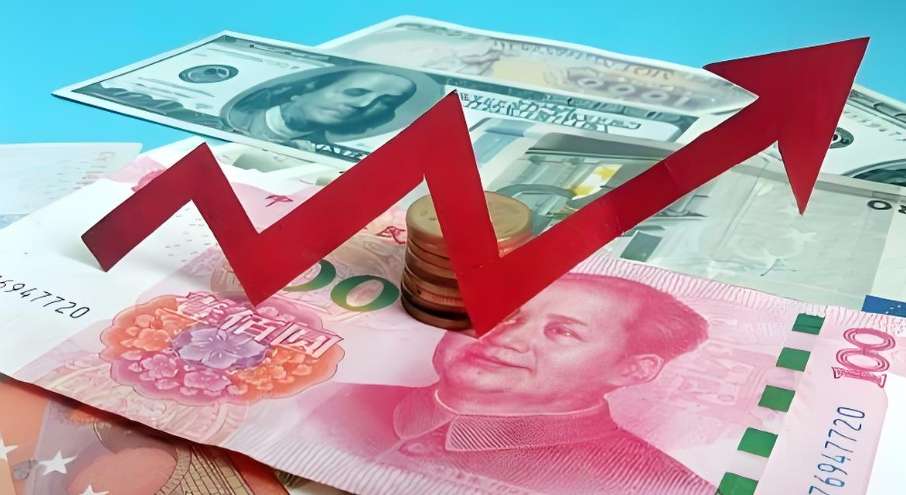A-share Market Shifts into Rapid Rotation Phase
Advertisements
In recent days, a notable discourse has emerged within the economic landscape of China, especially surrounding the stock market amid new regulatory policies aimed at invigorating capital markets and restoring investor confidence. Experts and market analysts have observed a resurgence of interest in the so-called "weighty cyclical blue chips," particularly in sectors like insurance, real estate, and steel. These sectors have witnessed impressive gains, with indices reporting rises of 8.42%, 7.31%, and 6.52%, respectively. As of the end of September, these gains reflect an upward trajectory that prompts discussions about a potential bull market.
However, one must tread carefully. Just as the government signals a desire for increased market vitality, the realities of reestablishing investor trust pose complex challenges. The fluctuation of the Shanghai Composite Index, which recently dipped to 3216 points, raises critical questions about the fundamental drivers behind such market movements. How much capital is required to catalyze a sustainable growth period? Market observers believe that the influx of three to four trillion yuan would be necessary to reverse the current stagnation, a daunting figure in the context of the existing macroeconomic climate.
Historically, periods of economic recovery do not occur without a solid framework for policy transmission. Economic analysts have noted that there is a systematic progression involving the establishment of a policy bottom, followed by emotional stabilization, market stabilization, and, finally, an economic recovery. Presently, favorable policy measures have not fully circulated through the system, which signifies the growth of investor skepticism. Despite the optimism surrounding the blue-chip rallies, significant tools such as IPO pauses have yet to be utilized, and the notion of a comprehensive market bailout remains elusive.

With the A-share market exhibiting characteristics of both stock game dynamics and a stagnant oscillation pattern, there remains a prevailing concern about the underlying health of the economy and its impact on company profits and valuations. Recent data indicated severe declines in profits for major industrial firms, further complicating the narrative around a market recovery. The Chinese industrial landscape showcased an alarming 16.8% drop in profits over the first half of the year, coupled with an ongoing downturn in profitability trends, making it hard to anticipate a shift to a profit-driven bull market.
As market participants eagerly watch for signs of a revival, active trading volumes remain subdued, with A-share transactions hovering at low levels of around 0.78 trillion yuan—far from the heights required for robust market activity. Consequently, the quest for a bull market led primarily by finance and real estate sectors faces significant headwinds, as both institutional and retail investors adopt a wait-and-see approach, keen to ascertain the true depth of government interventions and their effectiveness at stabilizing the market.
This backdrop of cautious optimism can also be seen as a reflection of accelerated shifts in market style. Rapid changes in the underlying structure of the market have led to distinctive behavioral trends within various sectors. The past eight years have seen the A-share market trapped in a battle between existing stock valuations and an rapidly evolving economic policy landscape, resulting in a scenario where oversupply of investment opportunities meets stagnant demand. The once flourishing sectors, particularly in technology like internet and media entertainment, have suffered significant downturns, generating negative returns that starkly contrast with prior gains.
In the current scenario, we see cyclical blue-chip stocks experience a burst of activity among institutional investors, effectively creating a seesaw effect across the market. Such behavior refers to opportunistic trading strategies that dominate the landscape, where market participants engage in quick buy-sell actions based on regulatory developments, producing conditions conducive to volatility. It raises concerns about the sustainability of such productivity and player confidence in the long term.
Furthermore, the ongoing structural disintegration of the equity markets warrants close monitoring. As we observe the relative pricing trends between A-shares and H-shares, reports indicated that the latter, particularly the Hang Seng Index and its constituents, have also seen significant declines. The AH premium index rebounded moderately, reflecting a broader trend where H-shares could potentially indicate a bottom formation, influencing A-share dynamics correspondingly. Watching for expansive price divergence now becomes a critical exercise for analysts seeking to forecast future market trajectories.
As varied investors sift through these complexities, the real questions surrounding the future of A-shares linger. Will the market stabilize enough to level out previous high valuations, or will systemic factors hinder recovery efforts? The current landscape provides a multifaceted yet challenging environment, with caution being the prevailing stance among informed market participants.
As analysts dissect these trends further, it becomes apparent that China’s unique approach to industrial regulation—characterized by direct price and sales controls and indirect adjustments through interest rate changes—adds layers of unpredictability that may influence firm profitability and market valuations in the long haul.
In conclusion, the Chinese stock market finds itself at a pivotal moment, grappling with the balance between cautious policymaking and ambitious investment strategies while facing historical profit declines and uncertain shareholder sentiment. As the cycles of optimism and pessimism interplay, many stakeholders remain vigilant, aware that the path to recovery is neither straightforward nor guaranteed.
Leave A Comment